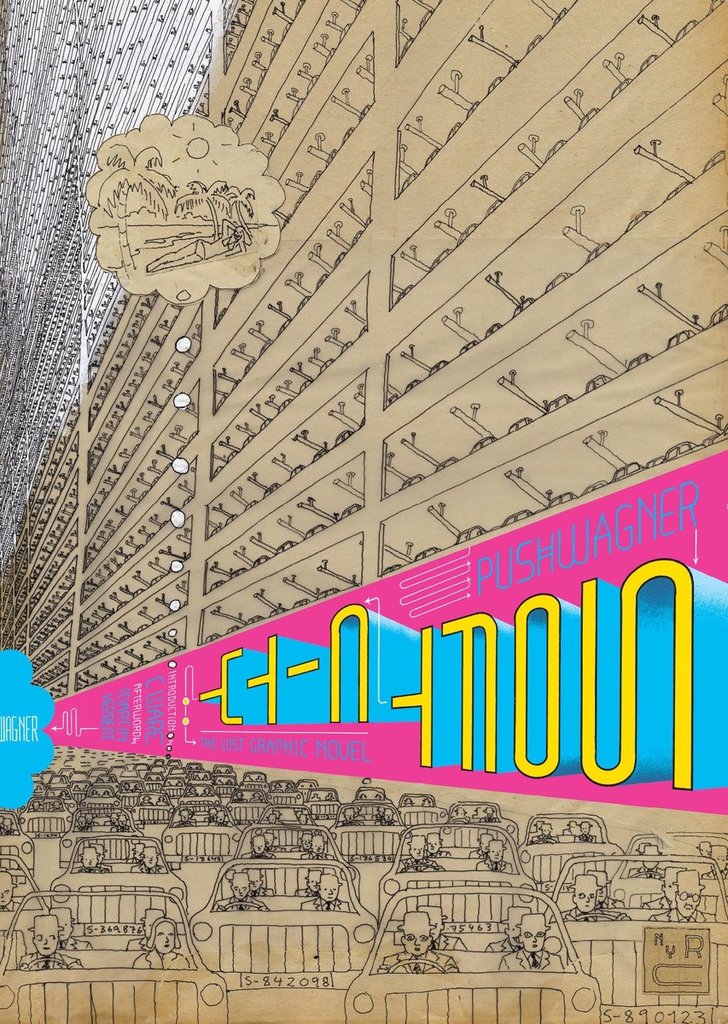Soft City
by Hariton Pushwagner
reviewed by Paul Hanna
Comic books as we know them were initially ephemera. Side-stapled magazines printed on cheap newsprint were never intended to have the shelf lives of books. They were not meant to inhabit people’s personal collections for years, to be revisited again and again. As such, they were not permitted the same level of influence as literature, poetry, or other media.

Some comics were lost to the ages—comics that were a product of their time, yet could have also informed or influenced the cultural zeitgeist but missed their window of opportunity. Soft City by Norwegian cartoonist Hariton Pushwagner is one example.
According to Chris Ware’s introduction, Soft City was drawn between the years 1969 and 1975, subsequently languished in obscurity, and was almost lost. Now repackaged in a hardcover volume published by New York Review Comics, readers can look back on a comics artifact that, given the opportunity, could have more powerfully affected the medium that today embraces the sort of content embodied by the blend of dystopian and science fiction Soft City offers.
Soft City illustrates a single day in a dystopian society owned by Soft Inc., an extension of a ruling and remote military-industrial complex. It is perhaps a vignette on the grandest possible scale. The entire world of Soft City uniformly runs on clockwork precision, while the people are afforded fleeting, superficial thoughts of individuality and fantasy throughout the day. One character in an elevator fantasizes about an impressive physique, while another sitting among a fleet of cars commuting to work fantasizes about fishing in a small boat.
Many of the visual tropes—the large, monotonous and imposing buildings, the homogeneity of the people and the way they mechanically execute their daily tasks with synchronized precision—are almost quaint in their datedness (think Fritz Lang’s Metropolis), yet supremely impressive in their sheer volume, symmetry, and craftsmanship. Every one of Pushwagner’s plentiful lines are noticeable because the renderings are so simple. There are no shadows. The stark black and white images are not in a chiaroscuro style. The repetition, however—the patterns that arise from duplicating the same images over and over again in a geometric nightmare—are what give Soft City its visual depth and heft. These stark patterns are the hallmark of the autocratic, mechanical world Pushwagner wants the reader to see.
The only characters who express some individualistic qualities are the children. Soft City opens from the perspective of an awakening toddler who is consumed by curiosity and leaves the cage-like crib to search for the sleeping parents. Pushwagner occasionally composes a panel from the toddler’s perspective inside the crib, peering through the bars, not only visually suggesting the toddler’s doomed existence, but the world outside the bars as well. “How strange the world seems,” muses the child.
Children are rendered slightly more individually, even if by a minor stretch—small variations in hair and choice of favorite toy. Everything else is a grand, haunting exercise in synchronicity, symmetry, and uniform identity. Children also arguably have the clearest, most concise thoughts. As the day unfolds and more adult figures appear, their thoughts and verbiage make less and less sense, making the impact of their words more and more powerful. Finally, the controller at Soft Inc. is introduced, and his thoughts are a word salad—or, at most, something akin to an old magnetic poetry set.
The most beautifully understated quality about this new release of Soft City is its contrast with contemporary works that explore similar themes. While our society wrings its hands over what “the end” looks like—the end of the world, the end of civilization as we know it, impending doom, and a post-apocalyptic future—Pushwagner has illustrated a future with no hope, where it is already too late. But Soft City is not a dead world. In fact, it is very much alive, with a heart that runs like clockwork. But without hope and spirit, readers are left to assume that each new day will be like the last. For Pushwagner’s Soft City, the end is forever.
Published on October 5, 2017


